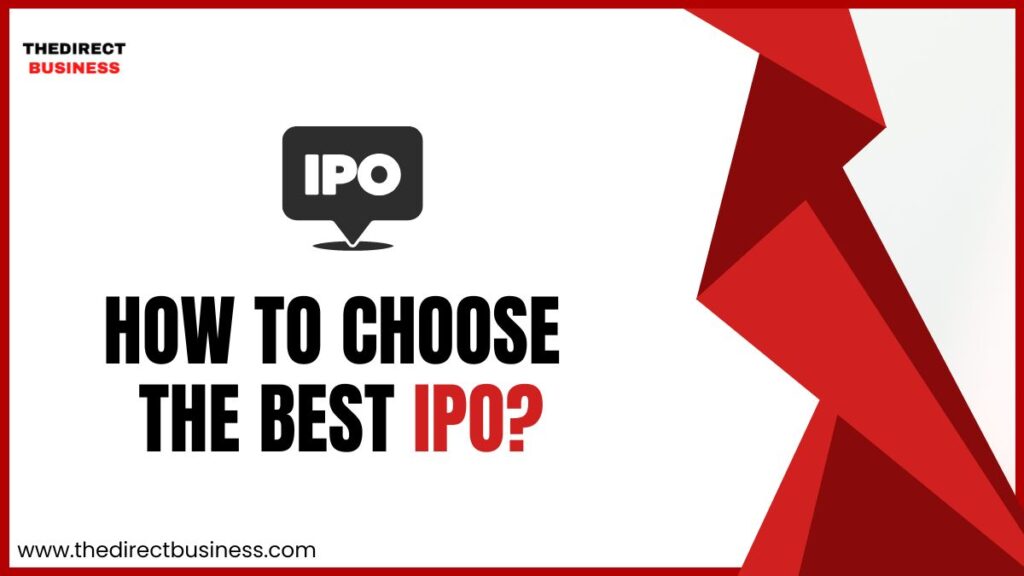
An Initial Public Offering (IPO) is the process through which a private company offers its shares to the public for the first time, thereby becoming a publicly traded company. It allows investors to purchase shares and become partial owners of the company. But do you know selecting the best Initial Public Offering (IPO) demands careful consideration and informed decision-making. With a plethora of companies going public, it is essential to navigate the IPO landscape effectively. This comprehensive guide equips investors with valuable insights to evaluate factors such as financial health, growth potential, industry trends, and management expertise.
By understanding the dynamics of new IPOs, investors can confidently identify promising opportunities that align with their investment objectives and risk tolerance. Below are the key considerations that one may take into account before investing in a new upcoming IPO.
- Evaluate the Business Strength
While reviewing the current IPO list, look for a potential company’s management credentials, business performance, operational model, etc. A relevant starting point while selecting the best IPO would be the red herring prospectus that every company issues. This document contains the full details you require to evaluate a business. Besides, before finalising, refer to the company’s website, media reports, annual reports, etc.
Invest in an IPO only if it convinces you of its business model, growth potential, financial well-being, management quality, etc. The company’s unique attributes and current industrial position are also worth noticing.
- Calculate the Company’s Growth Potential
A solid track record does not assure a strong growth potential in the future. Since you want to grow your investment by investing in an IPO, evaluating the company’s future growth potential is more important. After assessingthe company’s strength, analyse its growth potential in the coming years. Next, estimate its market share and find how it is expected to grow in the near future.
To evaluate a company’s growth potential, look at factors like its investment in technology, market expansion goals, and exploitation of its strengths. If you believe the company is performing well in these sectors, you may invest in its new upcoming IPO.
- Look at the Company’s Promoter Goals
Analysing the company’s promoter goals is crucial to assessing an IPO. Promoters play a significant role in shaping the company’s vision, strategy, and long-term goals. By examining their objectives, investors can gain insights into their commitment to value creation, corporate governance, and alignment with shareholders’ interests. Understanding the promoter’s track record, industry expertise, and past successes can provide valuable indications of their ability to drive the company’s growth and create shareholder value. Evaluating the promoter’s goals alongside other fundamental factors helps investors make informed decisions when considering an IPO.
- Assess the Use of Proceeds
You must read the red herring prospectus carefully to assess the intended use of funds raised through the IPO. The best new IPO is one where the company intends to use the money for growth-related activities, like entering new markets, acquiring another business, setting up new manufacturing units, investing in the latest technology, etc.
Investing in these avenues will eventually increase the company’s profits, resulting in more dividends and higher stock prices. However, if the company aims to repay debts, build working capital, or settle old claims with the raised funds, it might not be the best choice for you as an investor.
- Ensure that the Pricing is Worth it
After opening a Demat Account invest wisely in IPOs by assessing their true worth. Avoid solely relying on brand names as popular companies may overvalue shares, leading to oversubscribed IPOs. Thorough analysis ensures informed investment decisions.
You can calculate a company’s fair stock price by analysing its competitors’ IPOs based on Price-to-Sales and Price-to-Earnings (PE) Ratios. You will find both these figures in the company’s earnings statement. If these numbers are higher than the competitors, the stocks can be considered overpriced, and you must avoid investing in such an IPO.
Sometimes, the share prices are higher because the business is actually worthier than its competitors. Therefore, thoroughly analyse its history and growth potential to know if that’s the case.
Choosing the best IPO is easy if you know what factors to look at. Proper research, studying the business credentials, and considering your risk appetite without falling for marketing gimmicks will successfully align your IPO investment goals. Use these points as investment tips every time a new IPO comes.